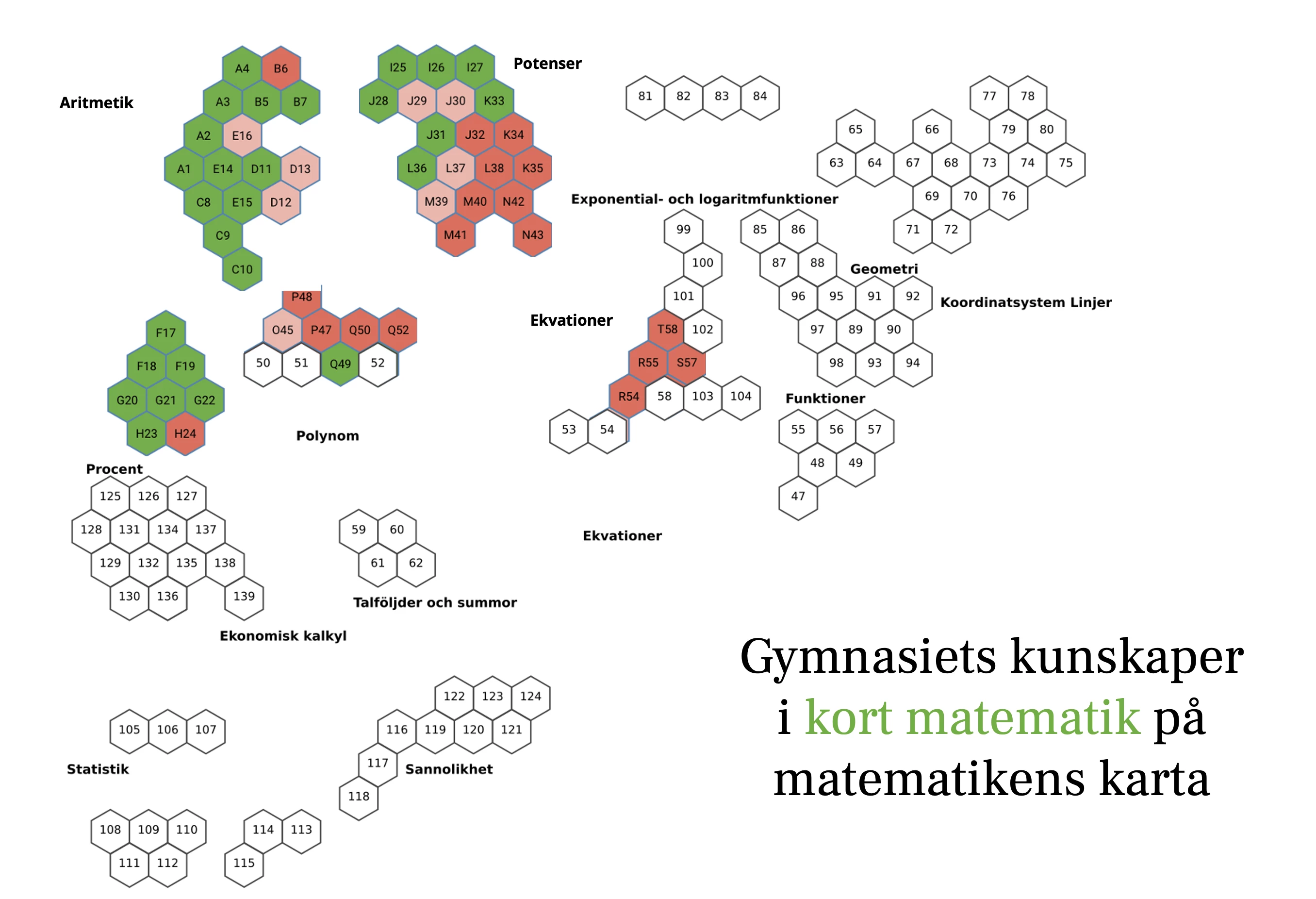Digital mapping helps upper secondary students build a stronger foundation in mathematics The project Digitalized Knowledge Mapping and Follow-up in Mathematics for Upper Secondary Students, a collaboration between Närpes Upper Secondary School and Korsholm Upper Secondary School from 2022–2025, has now been completed. Thanks to the Finnish National Agency for Education’s investment in innovative learning environments, the project has developed a digital approach to identify and address students’ individual knowledge gaps in mathematics through tailored math workshops** and real-time learning analytics via the eMathStudio platform.
Mapping knowledge in practice During the pilot phase, the digital mapping was tested at several levels: among ninth graders in the spring, the same students at the start of upper secondary school in the autumn, as well as first- and third-year upper secondary students. The results showed that students’ skill levels between the end of lower secondary school in the spring and the beginning of upper secondary school remained almost unchanged – indicating that the spring mapping already provides reliable information for the transition to upper secondary education.
The mapping clearly showed where the knowledge gaps were and which areas needed strengthening. The system, based on eMathStudio’s automatic math evaluator, requires no preparation from the teacher other than opening a mapping session for the group. Teachers can choose when to share the results with students. Third-year long-mathematics students were also tested – and although their results were good, some fundamental areas still needed review.
Bridging knowledge gaps – a challenge The project explored several ways to support students in addressing their knowledge gaps: voluntary math workshops, independent review sessions, and voluntary online courses. However, these approaches proved challenging to implement successfully, mainly due to school transport schedules and long distances for students. Instead, the focus shifted to developing digital mappings that can be used continuously throughout upper secondary school. This way, support can be integrated into regular teaching, and actions can be taken immediately when needed – rather than afterward.
Developing new mappings A team of five teachers collaborated with eMathStudio to develop mappings linked to the curriculum objectives. For each objective, the necessary sub-skills were identified, followed by tasks designed to measure whether students truly master them.
Mappings have now been created for several modules in both short and long mathematics, including MAG1, MAB2, MAA2, and MAB3–MAB7. The results are visualized in a mathematics knowledge map, where teachers and students can easily see which areas are strong and which need improvement. Teachers can explore the tasks by logging into eMathStudio and opening the Upper Secondary Mapping for Short Mathematics.
Looking ahead The project has shown that digital mappings can provide a detailed and reliable picture of students’ mathematical skills and create a shared foundation for collaboration between teachers, students, and guardians. The next step is to expand the approach to more upper secondary schools and further develop the digital tools so that learning follow-up becomes a natural part of every student’s mathematics journey.
Here you can find the knowledge matrix for upper secondary school’s short mathematics course.
Would you like to hear more? We are organizing a webinar series with sessions specifically designed for teachers and special education teachers. The webinars will be held in Swedish.
You can register for the event here IN SWEDISH ONLY
21.10.2025 at 16:00–17:00 Webinar for mathematics teachers
23.10.2025 at 14:00–15:00 Webinar for special education teachers
11.12.2025 at 10:00–12:00 Workshop + networking event at the Arena for Digital Learning, also including information about another UBS project where the introductory course and short mathematics mappings have been tested more extensively.

